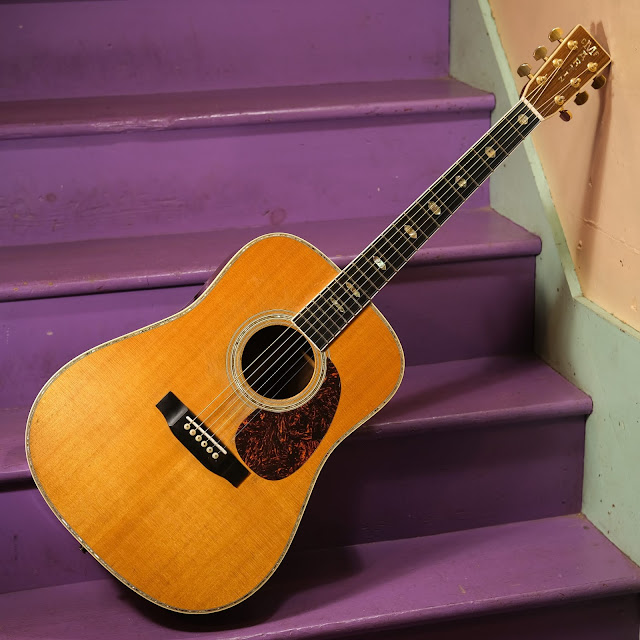2000 Martin D-41 Dreadnought Guitar
Twenty years out and this much-abused old D-41 finally needed a neck reset, new bridge, seam/binding work, fretwork, and a new saddle. It'd been played like nuts in all sorts of environments throughout the country, so it's not surprising that it would get to the state it was in. So -- workshop fun ensued.
Oh, but as a guitar? It's like a good, modern D-28 with more bling and a bit more grrrrr in its oomph. High-spec Martins from the '90s through the early '00s seem to have been pushed to the edge a little bit in terms of bracing -- they're fairly light. The ones I've worked-on have always had a good sound, lots of volume, and play well after service. However, that's at the expense of some bellying around the bridge that wouldn't look out of place on a '40s guitar and neck joints that are usually needing to be reset to counter those and other body changes as they settle-in.
So, yeah, they react like a high-spec guitar -- they're not the instrument I might choose first to do rough and ready gigs across the country -- though they look decided good while doing them, and the sound and response of the guitar make-up for the sports-car tendencies of fancy guitars.
Scale length: 25 3/8"
Nut width: 1 11/16"
String spacing at nut: 1 1/2"
String spacing at bridge: 2 3/16"
Body length: 19 7/8"
Lower bout width: 15 5/8"
Waist width: 10 7/8"
Waist width: 10 7/8"
Upper bout width: 11 3/8"
Side depth at endpin: 5"
Side depth at endpin: 5"
Top wood: solid spruce
Back & sides wood: solid rosewood
Bracing type: x-braced
Fretboard: ebony
Bridge: ebony (replacement), bone saddle
Bridge: ebony (replacement), bone saddle
Neck feel: slim C-shape, ~14" board radius
Neck wood: mahogany, bone nut
Neck wood: mahogany, bone nut
OK, these last two pictures are of the "before" -- check out that nice high action at the 12th fret.
...and the original bridge that'd been sanded/shaved-down.
















Comments